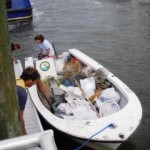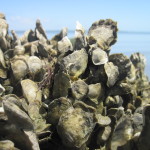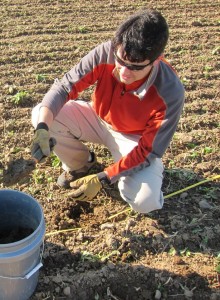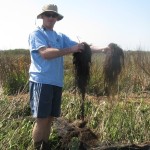This year’s Colloquium was held at Fort Johnson Friday, September 20th through Saturday, September 21st. The Colloquium provides our Marine Biology graduate students and opportunity to develop their scientific presentation skills. We were honored to have Felicia Coleman, Associate Professor of the Coastal and Marine Laboratory at Florida State University, as the Keynote speaker.
The weekend began with a poster session and social, followed by a day full of oral presentations on Saturday. Typically, second years students present posters and oral presentations are presented by students in their third year. Each student is provide with a critique and constructive feedback on their work. The Colloquium ended the award presentations and a Lowcountry Boil celebration. David Coles won for Best Presentation, and Liz Duermit won for Best Poster.










